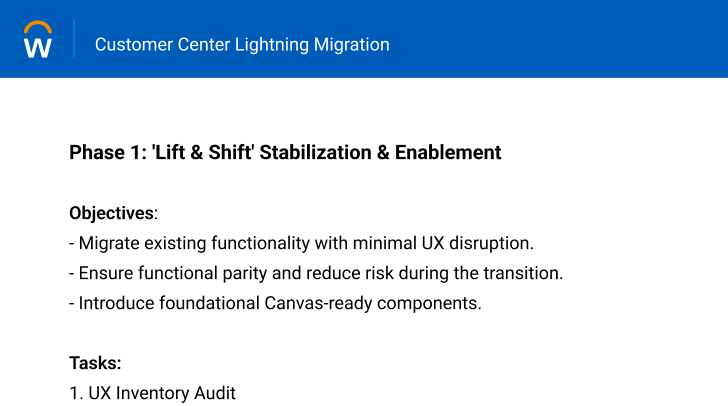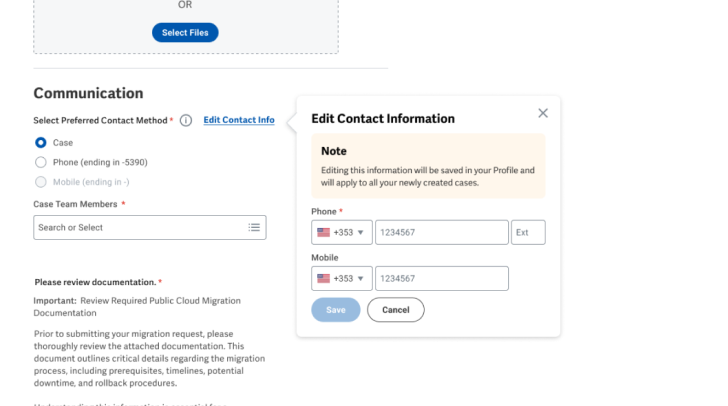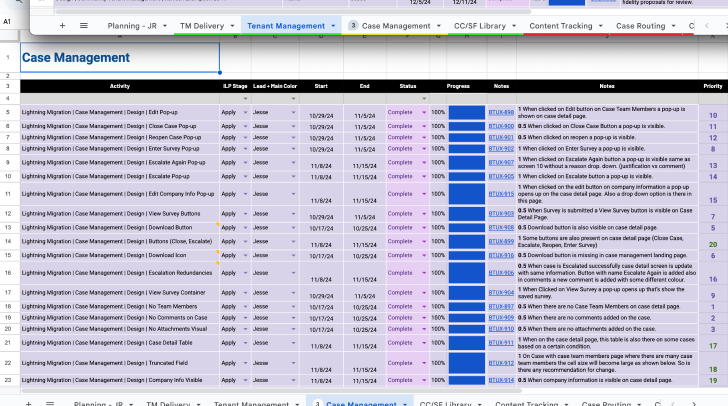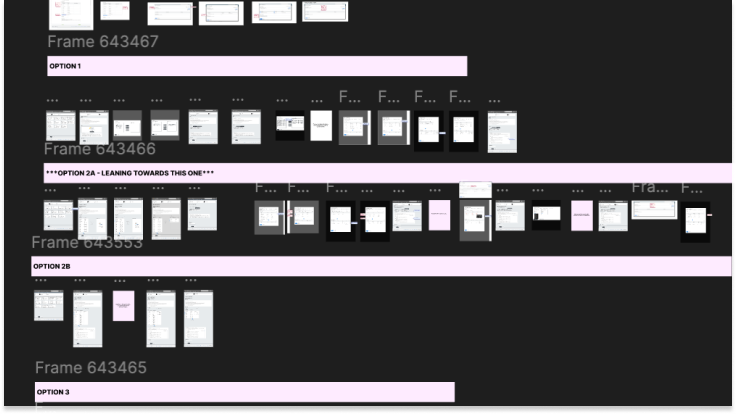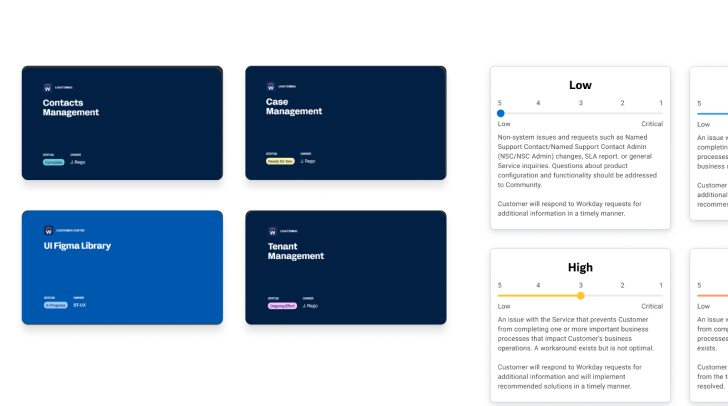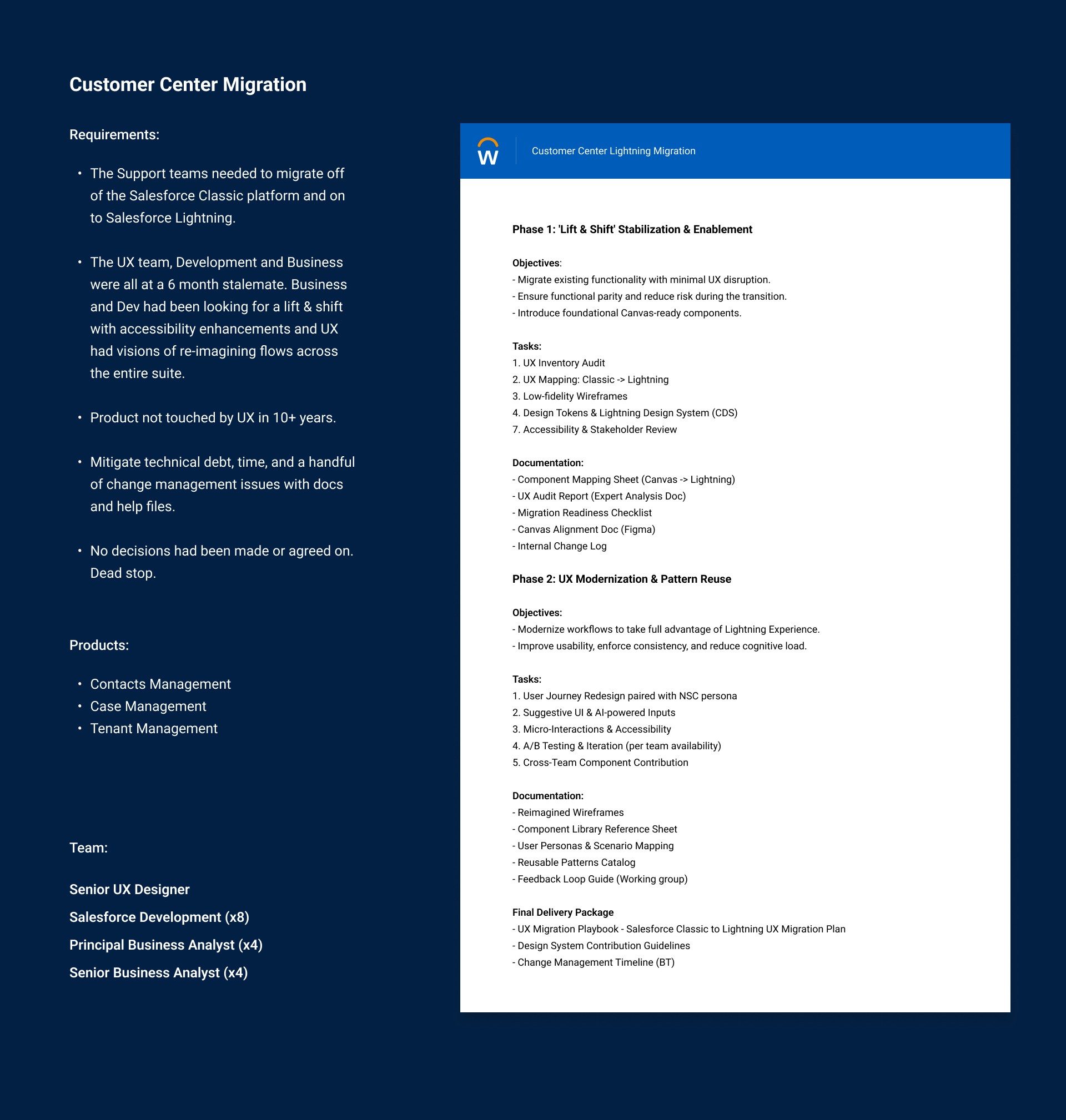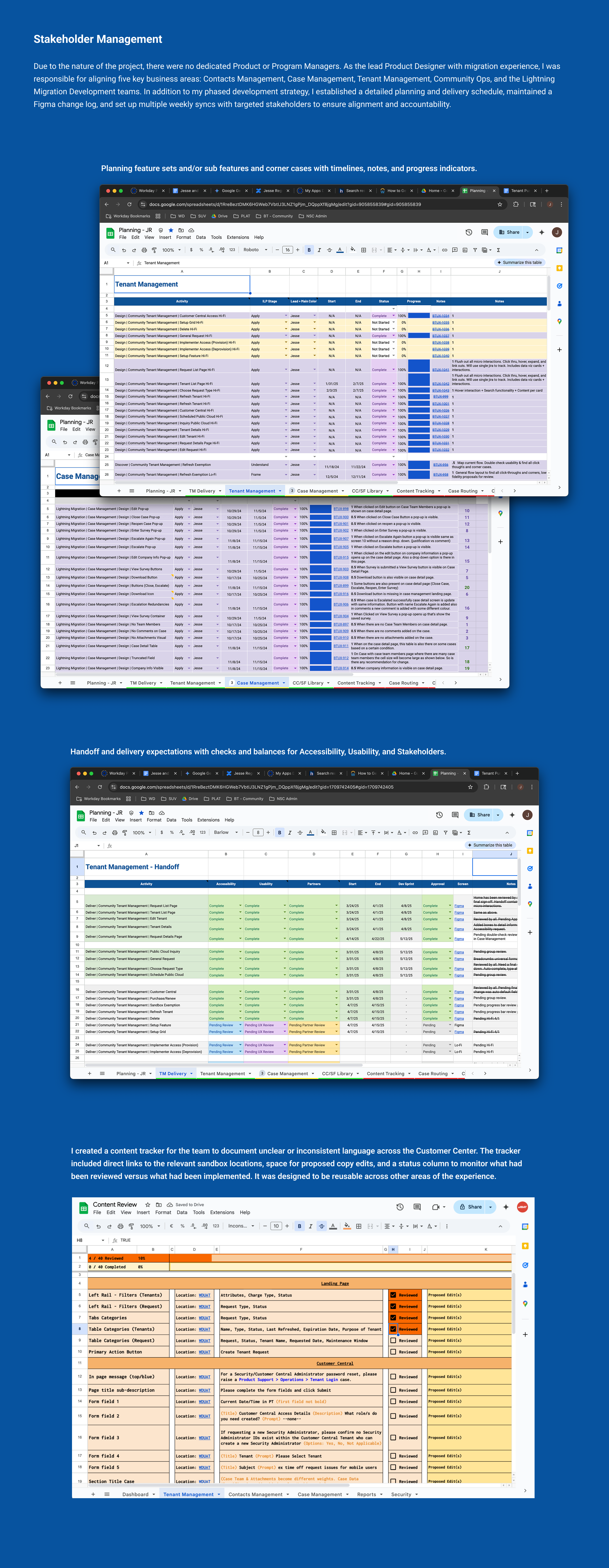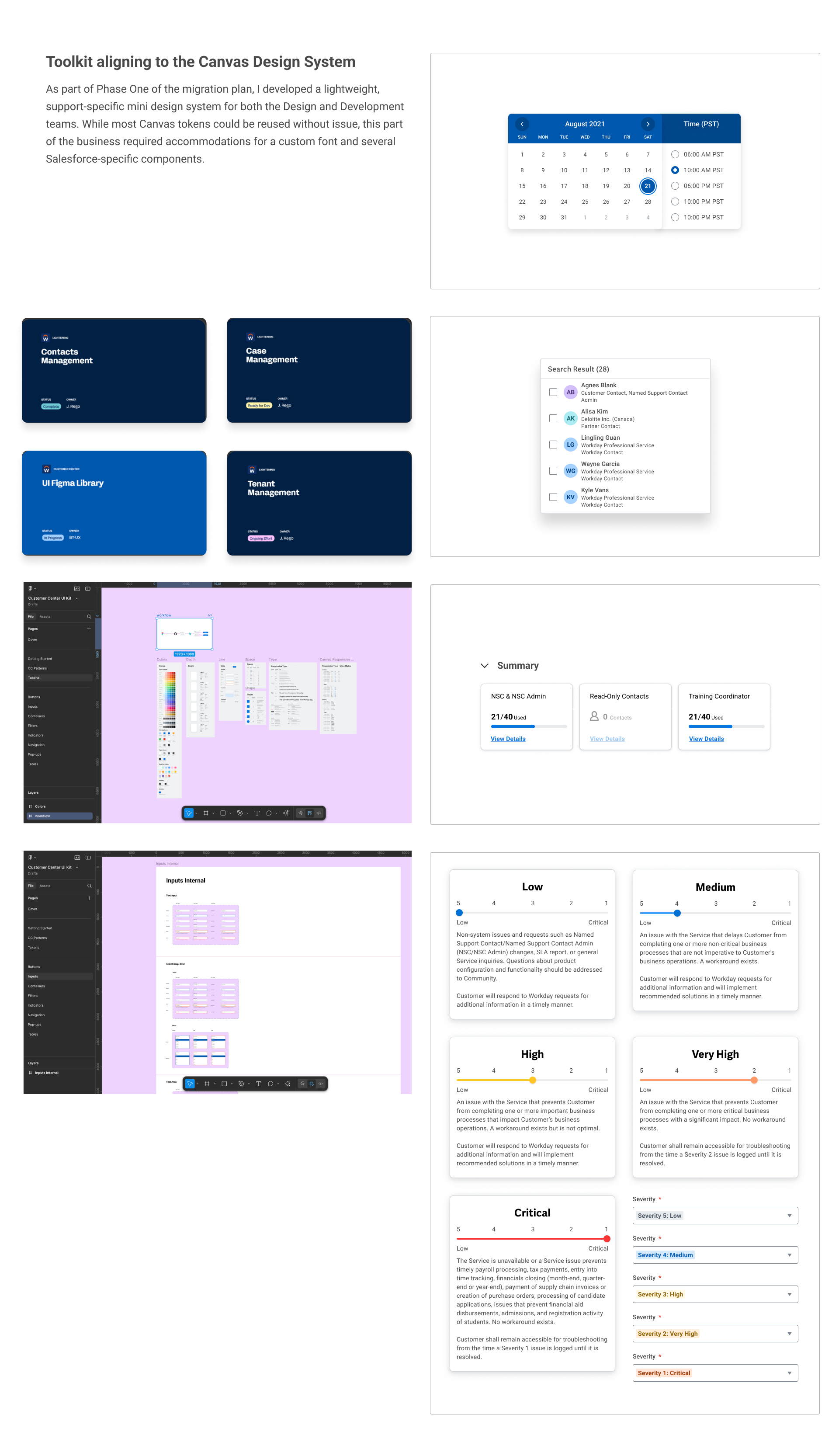Customer Center Migration
Faced with a high-pressure migration from Salesforce Classic to Lightning, I uncovered outdated and misaligned design work and redirected the effort into a two-phase migration plan. Grounded in standards and accessibility, balancing adoption needs with critical timelines.
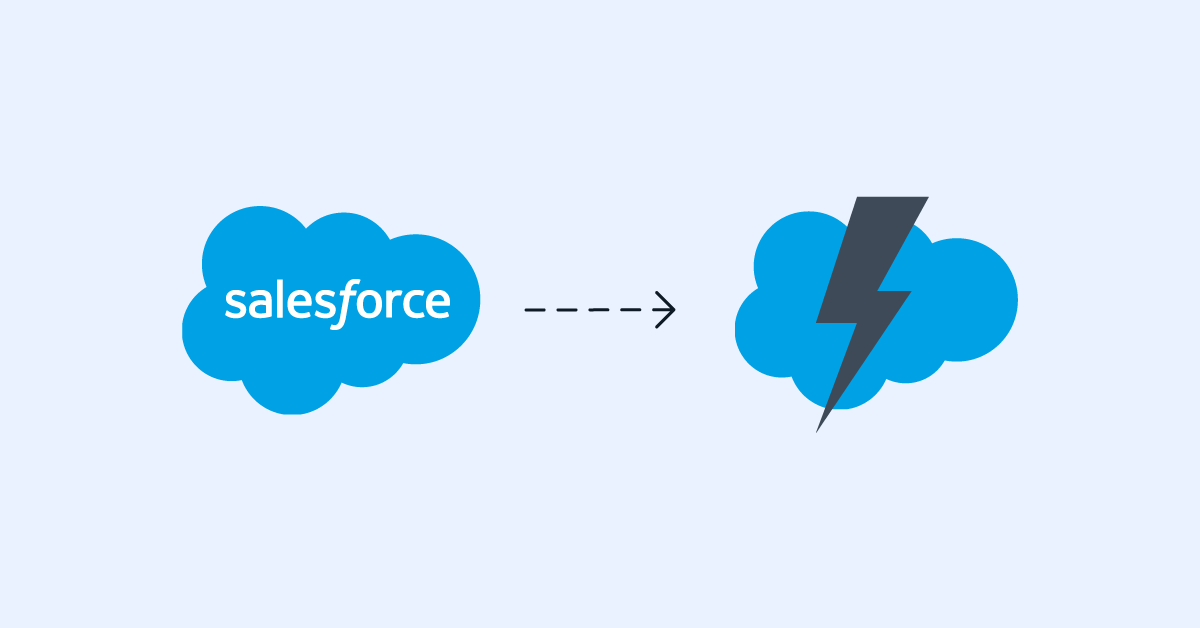
Overview
The Support Team was under pressure to migrate from Salesforce Classic to the Lightning platform. As part of this transition, the scope allowed for only modest UX updates to a product suite that hadn’t seen meaningful design changes in over a decade. During a review of the initial design files, I discovered the work was significantly outdated, six versions behind current standards, misaligned with business objectives, and introduced sweeping UX changes beyond the agreed scope. As a result, stakeholders rejected the proposal in favor of a “lift and shift” approach to protect timelines. To move the initiative forward, I developed a revised solution grounded in Canvas and accessibility standards, and introduced a strategic two-phase migration plan.
Impact at a Glance
Process
Problem
- The Support teams needed to migrate off of the Salesforce Classic platform and on to Salesforce Lightning.
- Product not touched by UX in 10+ years.
- Mitigate technical debt, time, and a handful of change management issues with docs and help files.
- No decisions had been made or agreed on for 7 months.
Approach
- Audit current feature set. Tenant, Contacts, and Case Management.
- Document and create a scalable process for tracking and deiting content heirarchy and verbiage across all areas.
- Introduce minor usability and experience path changes, where developmentally feesable.
- Provide spec screens with trackbacks to figma repo while development creates dev repo.
- Ensure all stakeholders are informed and included in weekly reviews.
Project Gallery
